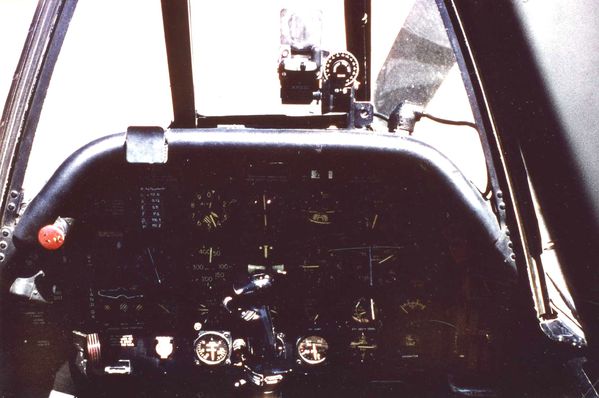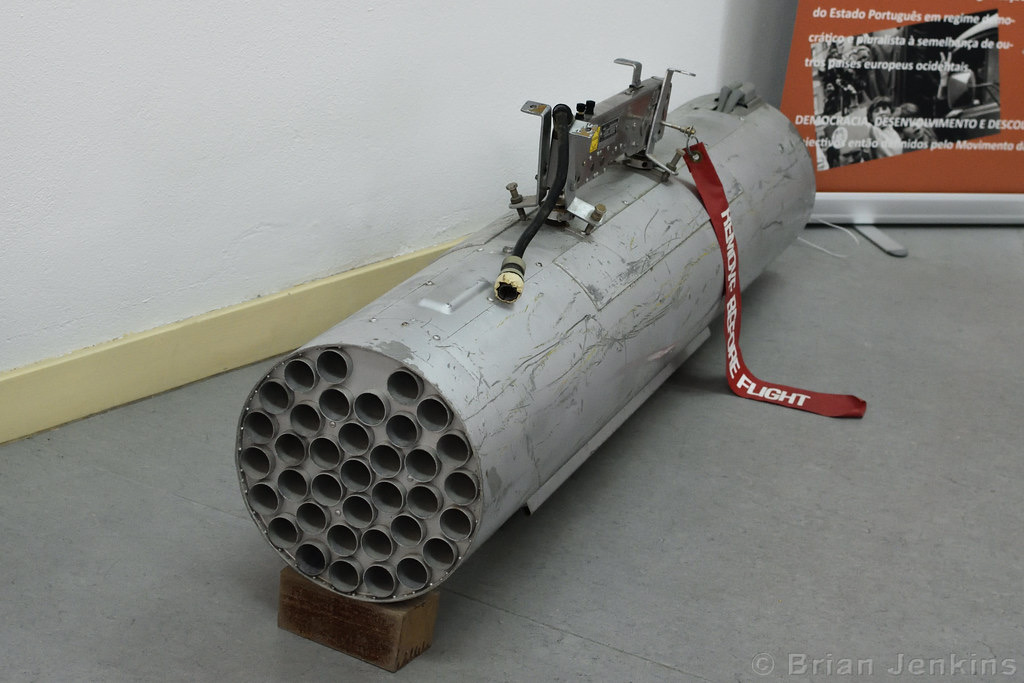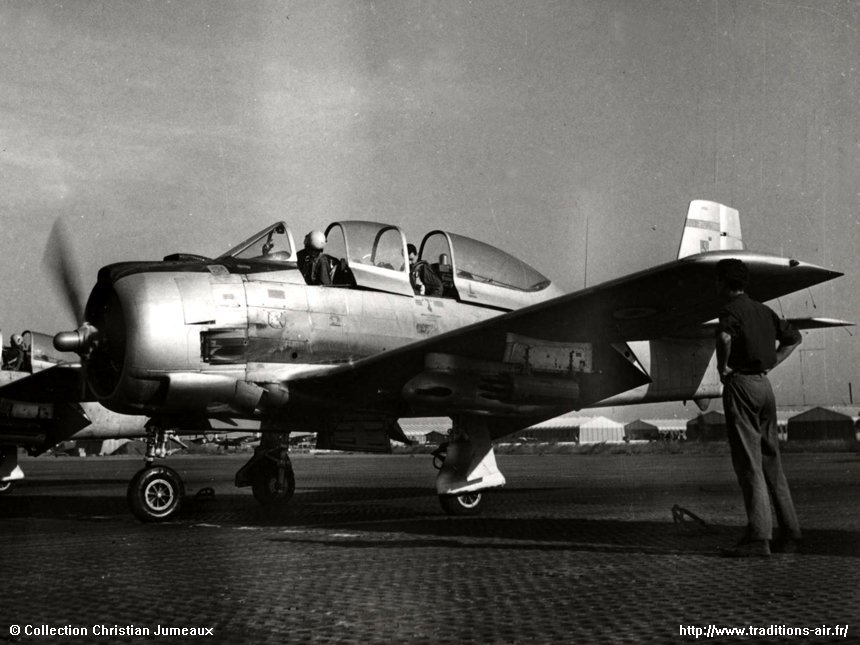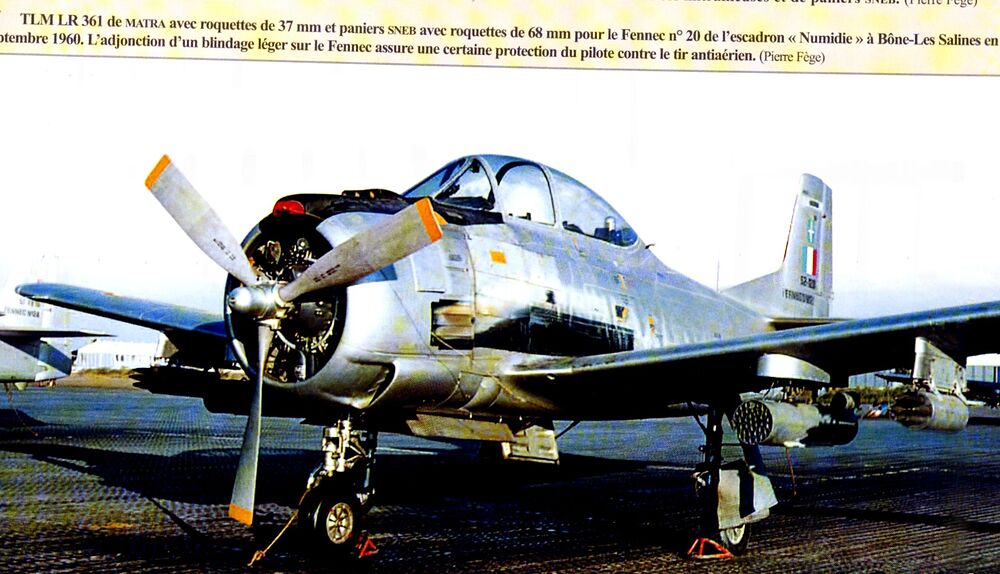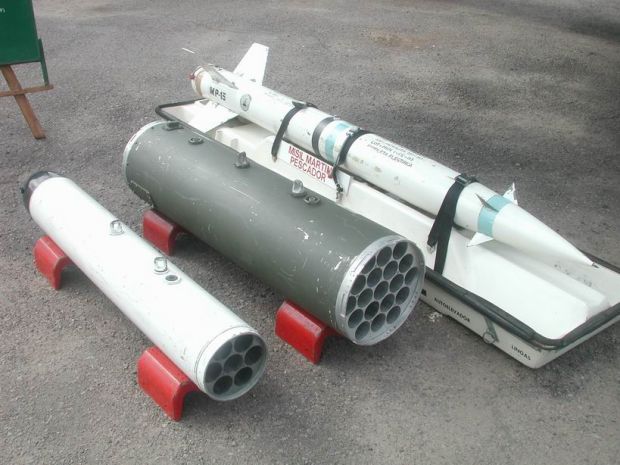- Yes
- No

Sud-Aviation T28 “Fennec”
Hey everyone! Today’s suggestion will be about the Sud-Aviation T28 “Fennec”!
Historical Background
Version en français
En 1959, en plein milieu de la guerre l’Algérie, l’Armée de l’Air cherche à doter ses EALA (Escadrilles d’Aviation Légère d’Appui) d’un nouvel avion capable d’effectuer des mission d’attaque au sol ainsi que de la reconnaissance aérienne. À cette époque, l’Armée de l’Air est dotée de deux appareils pour remplir cette mission : le North American T-6G Texan ainsi que le SIPA S.11 français. Ces deux avions, bien qu’adaptés aux missions qui leur étaient imposées avaient pourtant quelques défauts. D’abord, le Texan était très bruyant. Il était tellement bruyant que les résistants algériens savaient bien souvent que les T-6G français arrivaient avant même que les avions soient sur le théâtre des opérations. Le S.11 quand à lui était dérivé de l’Arado Ar 96 (un avion d’entrainement allemand de la seconde guerre mondiale). Il était en service depuis 1945 et avait une capacité d’emport jugée trop faible par l’Armée.
L’Armée de l’air s’intéressa donc au T-28 “Trojan” de North American Aviation pour remplacer ses T-6G et ses S.11 : avion biplace tandem à double commandes (sauf celles de tir non présentes en place arrière). Son choix s’est tout particulièrement porté sur les T-28 B de l’US Navy, versions plus puissantes que les T-28 A de l’US Air Force. La commande de T-28 B lui fut cependant refusée, le problème étant que la Navy ne pouvait pas se séparer de ses avions d’entrainement. Il fut alors décidé d’acheter 146 cellules de T-28 A, des moteurs Wright R1820-56S de 1425ch (récupérés sur des bombardiers B-17 en surplus) ainsi que des hélices tripales de T-28 B.
L’Armée de l’Air désigna Sud-Aviation pour s’occuper de la modification des cellules de T-28 A achetées. L’entreprise s’attela alors a l’assemblage de ces éléments ainsi qu’à la modification de certains autres, comme les points d’emport pour s’accorder aux besoins de l’armée de l’air, l’ajout de blindage pour la protection du pilote et le remplacement des équipements radios par des équivalents adaptés aux fréquences de communication françaises. Cette nouvelle version, spécialement modifiée pour la France pris le nom de T28 “Fennec”, nommé d’après l’espèce de renard éponyme vivant en Afrique du nord (North American l’appela pour sa part T-28F pour “France”, le pentagone lui donna la désignation de T-28S pour “Special” ou “supercharged”). NB : Dans la désignation française, le tiret entre la lettre et le nombre a disparu, montrant que le Fennec n’avait plus rien d’un avion d’entrainement.
Par rapport au T-6, le T28 Fennec était une véritable amélioration : il emportait plus d’armement, avait un meilleur rayon d’action (+ ~50%), était moins bruyant et disposait d’un train d’atterrissage “tricycle” facilitant l’atterrissage par temps de vent par rapport au train “classique” du Texan. Le seul défaut qui lui fut relevé était sa plus haute vitesse (300km/h vs. 500km/h) qui rendait la reconnaissance aérienne en basse altitude plus compliquée.

Le Fennec fit son premier vol le 10 mars 1960 et équipa quatre unités :
- l’EALA 03/004 de décembre 59 à septembre 62 ( ex EALA 5/70 puis 17/72 et 18/72)
- l’EALA 03/005 de novembre 60 à septembre 62 (ex EALA 2/72 et 9/72)
- l’EALA 03/009 de mai 60 à août 62 (ex EALA 7/72 et 12/72)
- l’EALA 03/010 d’octobre 60 à septembre 62 (ex EALA 3/72 et 6/72)
Le T28 Fennec fut utilisé durant toute sa période de service en Algérie comme avion léger d’attaque au sol et de reconnaissance contre les forces indépendantistes algériennes. Au moins quatre T28 furent déployés depuis l’Algérie pour soutenir la Marine Nationale lors de la crise de Bizerte en juillet 1961. D’autres furent déployés le long de la frontière Marocaine notamment pour contrer des livraisons de matériel militaire soviétique à la résistance algérienne.
Lors de la fin de la Guerre d’Algérie en 1962, les T28 encore en état de vol furent rapatriés en France et servirent dans des missions de surveillance aériennes jusqu’au début de l’année 1963 où ils furent retirés du service et stockés. La France les proposa l’année suivante à la vente à l’export, avec l’accord du gouvernement fédéral américain, achetés par l’Argentine, le Maroc et l’Uruguay.
In 1959, in the midst of the Algerian war, the French Air Force was looking to equip its EALA (“Escadrilles d’Aviation Légère d’Appui” or Light Aviation Support Squadrons) with a new aircraft capable of carrying out ground attack missions as well as aerial reconnaissance. At the time, the French Air Force was equipped with two aircraft to fulfill this mission: the North American T-6G Texan and the French SIPA S.11. Both aircraft were well suited to their missions, but had a number of shortcomings. Firstly, the Texan was very noisy. So noisy, in fact, that Algerian resistance fighters often knew that the French T-6Gs were arriving even before the planes were on the battlefield. The S.11 was derived from the Arado Ar 96 (a German WWII trainer). It had been in service since 1945, and its carrying capacity was deemed too small by the Army.
The French Air Force was therefore interested in North American Aviation’s T-28 “Trojan” to replace its T-6Gs and S.11s: a tandem two-seater with dual controls (except for the firing controls, which are not fitted in the rear seat). The choice fell on the US Navy’s T-28 Bs, more powerful versions than the US Air Force’s T-28 As. However, the T-28 B order was refused, the problem being that the Navy couldn’t afford to sell off its training aircraft. It was decided to buy 146 T-28 A airframes, 1425hp Wright R1820-56S engines ( taken from surplus B-17 bombers) and three-bladed T-28 B propellers.
The French Air Force appointed Sud-Aviation to modify the T-28 A airframes it had purchased. The company proceeded to assemble these components, as well as modifying others, such as the hardpoints for external armament to meet the needs of the French Air Force, adding armor to protect the pilot, and replacing the radio equipment with equivalents adapted to French communication frequencies. This new version, specially modified for France, took the name of T28 “Fennec”, named after the eponymous North African fox species (North American called it T-28F for “France”, while the Pentagon designated it T-28S for “Special” or “Supercharged”). NB: In the French designation, the hyphen between the letter and the number has disappeared, showing that the Fennec had nothing to do with training aircrafts anymore.
Compared to the T-6, the T28 Fennec was a real improvement: it carried more armament, had a better operating range (+ ~50%), was less noisy and had “tricycle” landing gear, making it easier to land in windy conditions than the Texan’s “taildragger” landing gear. The only drawback was its higher speed (300km/h vs. 500km/h), which made low-altitude aerial reconnaissance more complicated.

The Fennec made its first flight on March 10, 1960, and was fitted to four units:
- EALA 03/004 from December 59 to September 62 (ex EALA 5/70 then 17/72 and 18/72)
- EALA 03/005 from November 60 to September 62 (ex EALA 2/72 and 9/72)
- EALA 03/009 from May 60 to August 62 (ex EALA 7/72 and 12/72)
- EALA 03/010 from October 60 to September 62 (ex EALA 3/72 and 6/72)
The T28 Fennec was used throughout its period of service in Algeria as a light ground attack and reconnaissance aircraft against Algerian independence forces. At least four T28s were deployed from Algeria to support the French Navy during the Bizerte crisis in July 1961. Some others were deployed along the Moroccan border, notably to counter Soviet deliveries of military equipment to the Algerian resistance.
At the end of the Algerian War in 1962, the T28s still in flying condition were repatriated to France and used for aerial surveillance missions until early 1963, when they were withdrawn from service and put into storage. The following year, France offered them for export sale, with the agreement of the US federal government, purchased by Argentina, Morocco and Uruguay.
Specifications
Three-View Drawing of the Fennec

General Characteristics
- Crew : 2 (both can pilot except that the one at the rear can’t fire the weapons)
- Length : 9.75 m
- Span : 12.21 m
- Height : 3.86 m
- Wing area : 24,9 m^2
- Total mass when armed : 2887 kg
- Engine : Wright R1820-56S → 1425 hp
- Max speed : 455 km/h at 1800 m
- Service ceiling : 7300 m
- Max range : 1600 km
Armament
- Double 50. gunpod (100 ammo/gun) (internal hardpoints) x2
- SNEB 37mm MATRA type 181 (18 rockets) x4
- SNEB 37mm MATRA type 361 (36 rockets) x4
- SNEB 68mm MATRA type 122 (7 rockets) x4
- T10 140 / 151 Rockets x2 (external hardpoints) x2
- HVAR Rockets x4
- 125kg / 260lb bombs (or less heavy bombs) x4
- Napalm SECAN type 51 x4

Pictures
Camos





Sources
L'armée de l'air en AFN. Maroc, Algérie, Tunisie, 1940-1967 - Tome 2
Book by Alain Crosnier
ISBN-13 : 9782352504214
- ImagesDéfense - Barrage électrifié à la frontière algéro-marocaine et manœuvres d'intervention. (archive video)
- 16 - North American T-28 "Fennec" - Le blog de Avions de la Guerre d'Algérie
- https://www.avionslegendaires.net/avion-militaire/sud-aviation-t28-fennec/
- Air : L'aviation légère d'appui durant la guerre d'Algérie - Persée. (repartition of aircrafts)
- Le North American T-28D Fighter-Bomber
- L’Armée de l’Air en 1965 - Escadrilles
- La 9ème Escadre de Chasse – 3 - Escadrilles
- T-28 Fennec : des ailes pour un renard.
- T-28 "Troyan": avion d'entraînement et avion d'attaque léger contre-guérilla
- North American T-28 Trojan - Wikipedia
- North American T-28 Trojan — Wikipédia
Photos
- https://www.irsem.fr/data/files/irsem/documents/document/file/1613/08.%20COMAERO_Tugaye_Armements.pdf (rockets hardpoints blueprints p.30)
- https://jeanyvesthorrignac.fr/wa_files/197-Armee-de-l_Air-1945-1962-45.pdf
- WT Live // Images by Umbriellan
- North American (Sud Aviation) T 28 Fennec
- https://www.key.aero/article/cockpit-t-28-fennec
- Images de TENES :: T 28
- EALA 3/9 Numidie Escadron d'Aviation Légère d'Appui
- EALA 3/4 Escadron d'Aviation Légère d'Appui
PS :
WreckingAres283, I borrowed your suggestion artstyle, I found it quite aesthetic and practical. :P













